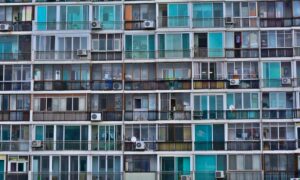There was an acute affordable housing crisis in the U.S. before 2020 also. A cherry on the cake, the pandemic has made the situation worse as millions of people lost their jobs and are unable to pay rent timely. A solution put forward by the White House and local lawmakers is increasing the supply of affordable housing, using such tools as reforming zoning and land-use regulations. Maxwell Drever has very interestingly pointed out that although it is agreeable that increasing the supply of homes is necessary, this won’t solve the nation’s affordability problems. You can say that there is no such rental housing shortage, but the actual problem is the lack of income to afford what’s available in the market.
Those with meager incomes face the most severe affordability problems. Half of our 9.7 million renter population spend more than 50% of their income on housing, sidelining their ability to meet other basic needs and adding the risk of homelessness. Almost two-thirds of these renters earn less than US$20,000, which is below the poverty line for a family of three.
Renters with little higher incomes also face housing affordability problems, but it is most severe in very low-income households.
An insight by experts to understand the concept in detail
For a household whose income is$20,000, we can assume $500 per month to be the maximum affordable rent, taking into account the affordability standard of spending 30% of income on housing. Contrastingly, in 2019, the median rent in the U.S. was $1,097, being affordable to households earning at least $43,880.
And homes that rent for $500 or less are hard to come by. This pushes low-income group renters into houses that they cannot afford, sympathizes Maxwell Drever. The problem of affordable housing persists not only in high-cost cities. Still, it is prevalent throughout the nation in the highest-priced markets with low vacancies, such as New York and San Francisco, and low-priced, high vacancy markets like Cleveland and Memphis.
There is no metropolitan area or country. Where a full-time minimum-wage worker can afford the “fair market rent” for a two-bedroom home. Even most basic units are out of affordability for low-income groups. At the root of the affordability crisis is the fact that building. And operating costs exceed the affordability of these renters. In 2018, the average operating price for a rental unit was $439, mortgage and other debt-related expenses excluded.
In simple words, even if you propose a rent which is at the bare minimum with no profit. Housing would still remain unaffordable for the maximum number of low-income households – unless you get rent subsidies.
The U.S. already has a program to help these people afford homes. As landlords often refuse to accept tenants using such means. It has made little difference, leaving millions of people belonging to the of low-income group unable to afford a home. And this is not a problem which more supply can solve. The concept of affordable housing crisis is a dream now that needs practical implementation. You need efforts from both ends to make it a reality.



































